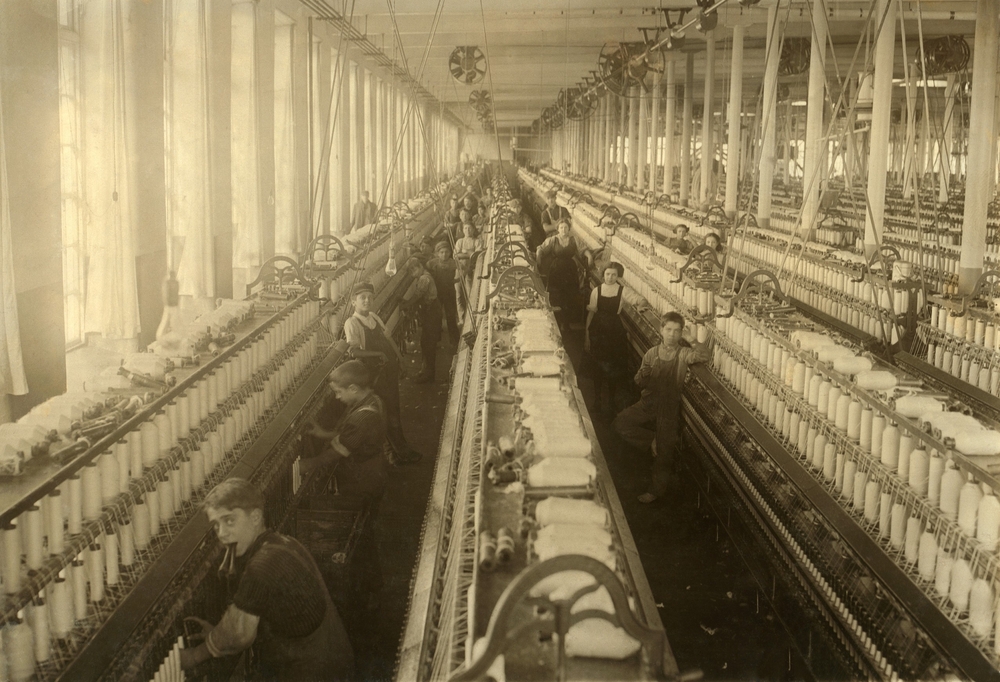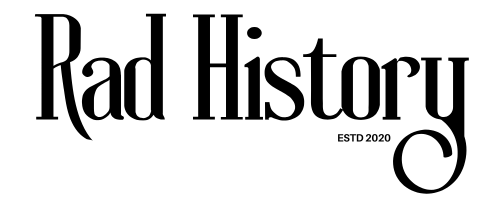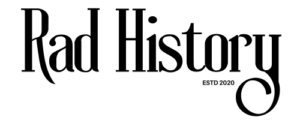Our modern societies have the 9 to 5 working schedules deeply embedded in their roots. Even to this day, this is regarded as the typical framework for full-time jobs. But, what was the inception of this schedule? Where are these hours of work considered to form the working part of the day? Let’s answer these questions, and look at how the concept of work is changing with remote and hybrid positions.
What Was the Source of the 9-5 Workday?
In the leadup to the first Industrial Revolution, virtually all work was agricultural or craft-based which required light. Of course, there was no electricity available at that time so the workday was determined by daylight hours and seasonal cycles. People tended to work longer days in summer and less in winter. This makes sense when you consider the nature of agricultural work outdoors when things tend to be dormant during the colder months.
This changed as the factories were built in the late 18th and into the early 19th centuries. There was a desperate need for factory workers that flooded into the cities. As a requirement, the work was more regimented and centralized. The productivity was maximized with workers pressed into jobs where they operated the new machines for as many hours as they could. In a typical factory job, the employee would work a 10-16 hour workday for six days a week with Sunday off for religious reflection and rest. Needless to say this took a terrible toll on the health and wellbeing of the employees. The conditions were harsh, child labor was found throughout the factories and exploitation was rife.

Eventually, this extreme exploitation led to a series of social movements that demanded a change. In the mid 19th century, labor activists were campaigning for a shorter working day and an end to child labor. Their new slogan was “Eight hours labor, eight hours recreation and eight hours rest”. This became the rallying cry for the formation of unions, church groups and others interested in the establishment of a fairer system. The goal was to create a more balanced life for factory workers. At the time, this was literally a revolutionary concept and changes were resisted by the elite.
In 1886, in Chicago, the landmark Haymarket Affair took place where the now nationwide movement advocating for the eight hour workday clashed with the authorities. The protest was peaceful at first, but it became violent and as a result the support for labor rights became galvanized in the masses. This drive for labor rights spread out across the US and further afield. In time the law changed to reflect these reasonable demands and The Fair Labor Standards Act (FLSA) was established in 1938. This was a major victory, maximum hours and minimum wage protections were enacted for most workers. The FLSA did not specifically set a 9-5 schedule for workers, but it did introduce the concepts of the eight hour workday or forty hours per week.
The shift to a 9-5 workday was a popular decision that arrived with the early 20th century and the rise of white-collar office work. This spread to other parts of the economy and in 1926 Henry Ford adopted the concept for the Ford factory workers. The move from a tough nine to a shorter eight hour workday was popular. The length of the Ford working week was dropped from six days to five days. As an added bonus, the shorter hours actually boosted productivity and the workforce was happy. Mr. Ford had already raised wages for his workers back in 1914 and as you might imagine there was a lot of competition for a Ford factory job.
The new office culture adopted the same FLSA laws and it made sense to work at the same time as everyone else. The new 9-5 working day fitted into daylight hours leaving plenty of personal time for families and to use public services. This system was in alignment with the arrival of government offices and service industries. The predictable times were adopted by banks, retail outlets, post offices and other businesses. These would all open at 9am and close in the afternoon or early evening. This mindset persists to this day, the 9-5 workday is an indicator that a person is in full-time employment, but this system is no longer as cut and dried as it was in the past.
The Growth of Digital Technology
Great societal upheavals often occur in the wake of technological innovation. This was true at the inception of the 9-5 working day and it’s transforming the paradigm again. In the last twenty years, we have seen a massive growth in digital technology that has transformed how, when and where we can work. The invention and adoption of smartphones, laptops and cloud platforms has allowed people to work from anywhere with an internet connection. It’s easy to communicate, share files and collaborate with teams using digital tools, such as Google Workspace, Microsoft Teams, Slack, Zoom and numerous others. The real-time communication features and asynchronous collaboration features means that team members can coordinate even if they are not working the same hours!
There were four key technologies that made this remote working shift possible.
- Broadband Internet: By the early 2000s, it had become possible to collaborate remotely due to the higher speed connections.
- Smartphones: The first iPhone released in 2007 and the later Android devices allowed people to communicate and work together with a portable device that could use apps.
- Cloud Services: The first viable cloud service to enter the market was Dropbox in 2007 followed by Google Drive in 2012. When Microsoft 365 added remote document sharing and co-editing from anywhere with an internet connection, this was a game changer.
- Collaboration Platforms: Zoom was founded in 2011 and it was followed by Slack in 2013. In time, Asana, Jira and Trello followed and project management was no longer tied to a single location.
The implementation of these technological advances had a huge effect on the expectations of the new digitally connected workforce. There was no longer any need to have your schedule aligned with others to complete a project. Most people now expected fast responses from colleagues and clients regardless of where they were in the world. The downside is that people that are always connected tend to feel like they are at work all the time. This can lead to scenarios where people drift in and out of work when in the past they would have had a clear finish to their day.

It’s easy to imagine that this new working model was primarily driven by freelancers working in the new gig economy, but that isn’t the case. One of the pioneering companies was Dell. This computer company began a “Connected Workplace” platform before the Covid-19 pandemic began. By 2019 around 65% of Dell employees were working remotely some of the time. This helped the company to attract and retain talent from around the globe. This demonstrates how technology can promote productivity and sustain distributed working teams.
Understanding the Impact of Remote Work
Many of us now work in a purely remote or hybrid career and it can be hard to understand how we got here. We’ve almost drifted into these roles and it’s easy to forget that this is still a very new way to work. The adoption of remote work accelerated during the Covid-19 pandemic when many of us were locked down in our homes.
During this trying period, it quickly became apparent that using the latest technology, most of us could function perfectly well outside a traditional office environment. The employees gained more freedom and control over their daily schedule. People began to work when they felt more productive and this would differ depending on the individual. Some would work in the late evening after the kids had gone to bed. Others would get their tasks completed in the early morning hours before the rest of the family woke up. Most people adopted a split shift arrangement to work around their family commitments.
Remote Work Challenges and How to Fix Them
| Issue | Description | How to Fix It |
|---|---|---|
| Lack of Work-Life Boundaries | Home becomes office, making it hard to “clock out.” | Set firm work hours and use a separate space for work, if possible. |
| Isolation and Loneliness | Missing daily social interaction can lead to burnout. | Schedule regular video check-ins and use coworking spaces occasionally. |
| Communication Breakdowns | Remote setups often lead to misinterpreted emails or delayed replies. | Use video for nuanced conversations and set expectations for response times. |
| Overworking or “Always On” Culture | Without a commute, some feel pressured to be online constantly. | Communicate availability clearly and log off fully outside work hours. |
| Distractions at Home | Household chores, kids, or media can derail productivity. | Use time-blocking techniques and noise-canceling headphones if needed. |
| Career Visibility and Advancement | Remote workers may be “out of sight, out of mind.” | Proactively share wins, attend virtual events, and request regular feedback. |
The downside to remote work was the blurring of boundaries between work and home life. Many people struggled to meet this challenge, overworking became a problem and it was difficult to disconnect. When a worker is always expected to be connected, there is a clear need for a policy and cultural shift. Learning to say “no” or “I’ll get to it later” was an essential boundary setting skill that some people have still not grasped. The adoption of remote work has led to some interesting insights about our increasingly digitally connected global economy.
The Convenience of Asynchronous Work
Now a globally diverse team can work together across multiple time zones and tasks don’t have to be completed at the same time. A developer working in India may write code, while a US-based product manager reviews it the next day and makes actionable commentary.
This asynchronous workflow is a clear challenge to the established 9-5 work model. The priority is output of the implementation of synchronized hours which would inhibit collaboration.
The Rise of the Gig Economy
There has been a revolution in freelance work and in 2023, it was estimated that around 36% of American workers had taken part in freelance or gig work. In 2022 alone, the freelance platform market exceeded $4.4 billion in revenue. Some of the more famous examples include: Upwork, Fiverr, Uber, Lyft, 99designs, TaskRabbit, Instacart and many others.

These platforms give the person an opportunity to offer independent services on their own schedules. An Upwork freelancer can bid on contracts in a wide variety of fields from anywhere in the world. An Uber driver can pick up a client if they have a spare hour or two in the day to make some money. This flexibility is a revelation for those that value their freedom over right corporate commitments and structures.
The Creation of a Portfolio Career
This is a growing trend where a worker will piece together their freelance and gig experience into a portfolio for review. This demonstrates that they are able to manage their time, network with clients and complete a wide variety of tasks to a good standard. Potential clients can work with freelancers that share their values and work-life balance can be maintained.
The Challenges of Gig Work
It may seem that freelancing and gig work is the best option for those that want to work remotely. But, nothing is perfect and there are significant challenges to overcome. A gig worker will not have certain legal protections, a retirement plan, health insurance, and other benefits that employees take for granted.
This strays into a complex area where employee vs. contractor classifications become a real issue. There is economic inequality for gig workers, there can be a gap in income and people with no marketable skills can struggle to find work. Upskilling, private insurance, healthcare plans and other ways to overcome these challenges are all valid paths to freedom for the truly driven.
The Promotion of Mental Health and Embracing Work-Life Balance
The drive to be “always on” for remote workers had led to a growing awareness of burnout. Being available 24/7 does take a toll and it is recognized as an occupational hazard, and was classified as such by the WHO in 2019. According to a Gallup survey conducted in 2021, around 76% of employees reported some burnout and 28% felt burned out frequently.
This necessitated a response by employers to ensure that remote and hybrid workers would remain productive and committed to their work. Many companies adopted a flexible scheduling model using remote days, compressed workweeks, flextime and other options that allow workers to organize their time and reduce stress. Some employers established mental health days, meditation sessions, counseling and even promoted wellness apps for their workers. A new culture of boundaries has arisen that discourages sending after-hours emails to give the worker some disconnection to relax during their downtime.
The ever elusive search for work-life balance and integration has been brought into sharp focus as remote and hybrid work becomes more popular. Many remote workers want a blended work life that allows them to engage in hobbies, spend time with their family and take care of their mental and physical health. But, they need to do this without neglecting the responsibilities of their position with their organization. This is a huge departure from the monolithic 9-5 working mindset, but with the digital connectivity and smarter working ethos this is possible.
What is the influence of Remote Work on Younger Generations?
The perspectives of Gen Z and Millennials has been a complete reshaping of “normal working hours” with a renewed focus on meaningful and productive work. All the surveys on this topic have shown that these two generations in particular place a priority on remote options and flexible hours over a higher salary. It’s more important that the work aligns with their personal values and the wider impact on society. This is a radical departure from a hierarchical office culture. The younger generations are comfortable with digital tools and they can adapt rapidly to asynchronous remote working opportunities.
According to Deloitte’s 2023 Global Gen Z and Millennial Survey more than 40% of younger workers have turned down a job or assignment that clashed with their personal ethics. Around 75% wanted a permanent remote or hybrid working environment. In particular, Gen Z especially values flexibility, transparency and mental health over their income. This is a cultural shift away from Gen X and Boomers that traditionally favored a 9-5 job for stability and security. It was the Millennials that first popularized that life is to be enjoyed and not endured. Gen Z have gone even further, they are digitally connected natives that regard flexibility in work as their baseline position.

This cultural shift has had a huge effect on employers that want to remain profitable and productive. The organizations that choose to keep their rigid schedules will lose the Gen Z and Millennial talent to their competition. The employers that offer autonomy, flexibility and purpose-driven work are more likely to prosper in the future. So, it should come as no surprise that successful companies are now incorporating those values into their structures.
Innovative Working Models
Some high-profile organizations have conducted trials that prove that reduced working hours may sustain and even boost productivity. In Iceland the public sector found that employee well-being increased with no drop in their output. A trial at Microsoft in Japan used a four day week with the same pay and experienced a 40% productivity increase! Three other working models are being explored.
- Staggered Hours: The employee starts and ends their working day at differing times to accommodate their personal needs and ease congestion on the transit network.
- The Results-Only Work Environment (ROWE): The employee is purely evaluated on their output and not the hours they spend working. This gives them autonomy to work harder when they want to and take breaks when they prefer to rest.
- Unlimited Vacations: Certain employers have eliminated fixed vacation limits, the employees are trusted to manage their own days off and relaxation. As long as the work gets done, the employee can take time off whenever they feel like they need it.
These and other working models are certainly interesting developments, but there are significant challenges to overcome. This type of flexible approach will not work in every industry and the only way these models can work is with clear lines of communication and high-trust between the employer and the employee. A results-focused culture may suit driven workers, but others may require motivation.








